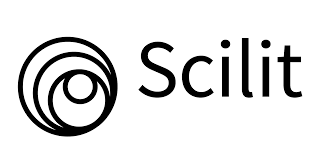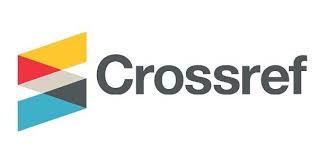KONSTRUKSI INSENTIF PAJAK TERHADAP INDUSTRI DAUR ULANG PLASTIK DALAM RANGKA PENANGANAN SAMPAH PLASTIK DI INDONESIA
DOI:
https://doi.org/10.25170/wpm.v15i2.5038Keywords:
daur ulang, fasilitas PPN Tidak Dipungut, insentif pajak, sampah plastik, tax holidayAbstract
Daur ulang sampah plastik merupakan upaya sekelompok masyarakat untuk mengumpulkan dan memproses sampah plastik hingga menjadi biji plastik, yang dapat digunakan sebagai bahan baku untuk berbagai produk plastik. Industri ini melibatkan banyak tenaga kerja, serta memberikan nilai tambah ekonomi yang cukup signifikan. Saat ini, upaya tersebut sedang terancam keberlanjutannya, karena produknya sulit bersaing dengan biji plastik orisinal yang harganya sedang anjlok, seiring dengan anjloknya harga minyak di pasar dunia. Penelitian ini bertujuan untuk menganalisis perlu atau tidaknya industri daur ulang sampah plastik diberi insentif pajak, agar tetap berlanjut kegiatannya, serta menganalisis untuk menentukan kebijakan pajak apa yang tepat untuk mengatasi masalah yang terjadi. Metode penelitian yang digunakan adalah studi literatur. Simpulan yang diperoleh adalah bahwa industri daur ulang sampah plastik merupakan upaya nyata untuk mengurangi volume sampah plastik secara berkesinambungan. Untuk melindungi industri daur ulang sampah plastik, penelitian ini merekomendasikan beberapa kebijakan pajak perlu diterapkan secara komprehensif, yaitu memberikan fasilitas PPN DTP terhadap produk biji plastik daur ulang sebagai bentuk partisipasi dalam pelestarian lingkungan
References
Alink, M., & van Kommer, V. (2015). Handbook on Tax Administration ( Second Revised Edition ) (2015th ed.). IBFD.
Berry, A. (2019). The distributional effects of a carbon tax and its impact on fuel poverty: A microsimulation study in the French context. Energy Policy, 124(October 2018), 81–94. https://doi.org/10.1016/j.enpol.2018.09.021
Cheng, S., & Shi, S. (2015). Green Tax in the People ’s Republic of China. International Tax Journal, 41–02(April), 61–74.
Christoffersen, H., & Svendsen, G. T. (2002). Bureaucratic Tax-Seeking: The Danish Waste Tax. Energy & Environment, 13(3), 355–366. https://doi.org/10.1260/095830502320268223
Cossu, R., & Masi, S. (2013). Re-thinking incentives and penalties: Economic aspects of waste management in Italy. Waste Management, 33(11), 2541–2547. https://doi.org/10.1016/j.wasman.2013.04.011
Data th 2018. (2018). Dinas Lingkungan Hidup DKI Jakarta. https://lingkunganhidup.jakarta.go.id/data-th-2018/
Drozdenko, R., Jensen, M., & Coelho, D. (2011). Pricing of green products: Premiums Paid, Consumer Characteristic and Incentives. International Journal of Business, Marketing, and Decision Sciences, 4(January 2015), 106–116. https://eng.mst.dk/media/mst/68965/17. pricing of green products.pdf
Fau, T. N., Sudewo, D. P., Pinasthi, S. T., & Putra, M. D. (2018). Melacak Jejak Plastik di Industri Sintetik. https://www.validnews.id/Melacak-Jejak-Plastik-di-Industri-Sintetik-SMe
Fitriani, E. (2015). Industri Plastik Bidik Omzet Rp 111 Triliun. https://id.beritasatu.com/home/industri-plastik-bidik-omzet-rp-111-triliun/105325
Gebregiorgs, M. T. (2018). Towards sustainable waste management through cautious design of environmental taxes: The case of Ethiopia. Sustainability (Switzerland), 10(9), 1–23. https://doi.org/10.3390/su10093088
Hoogmartens, R., Eyckmans, J., & Van Passel, S. (2016). Landfill taxes and Enhanced Waste Management: Combining valuable practices with respect to future waste streams. Waste Management, 55(July 2015), 345–354. https://doi.org/10.1016/j.wasman.2016.03.052
Industri Kemasan Plastik Jadi Rantai Pasok Penting Sektor Lain. (2018). Kementerian Perindustrian RI.
Irianto, E. S., Rosdiana, H., & Tambunan, M. R. (2018). On quest of environmental tax implementation in Indonesia. E3S Web of Conferences, 52, 1–8. https://doi.org/10.1051/e3sconf/20185200013
Lin, B., & Jiang, Z. (2012). Designation and influence of household increasing block electricity tariffs in China. Energy Policy, 42, 164–173. https://doi.org/10.1016/j.enpol.2011.11.062
Marques, R. C., Da Cruz, N. F., & Carvalho, P. (2012). Assessing and exploring (in)efficiency in Portuguese recycling systems using non-parametric methods. Resources, Conservation and Recycling, 67, 34–43. https://doi.org/10.1016/j.resconrec.2012.07.005
Ministry of Environment and Forestry. (2020). National Plastic Waste Reduction Strategic Actions for Indonesia. In Ministry of Environment and Forestry, Republic of Indonesia. https://wedocs.unep.org/bitstream/handle/20.500.11822/32898/NPWRSI.pdf
Mwanza, B. G., & Mbohwa, C. (2017). Drivers to Sustainable Plastic Solid Waste Recycling: A Review. Procedia Manufacturing, 8(October 2016), 649–656. https://doi.org/10.1016/j.promfg.2017.02.083
OECD. (2007). Policy Brief The Political Economy of Environmentally Related Taxes (Issue February).
Pol, E., & Ville, S. (2009). Social innovation: Buzz word or enduring term? Journal of Socio-Economics, 38(6), 878–885. https://doi.org/10.1016/j.socec.2009.02.011
Purwoko. (2015). Kebijakan Fiskal untuk Mendorong Industri Daur Ulang Sampah Plastik. 193–213.
Saugi, R. (2018). Kemenperin: Produksi Plastik Nasional Capai 4,6 Juta Ton. Jawapos.
Schlegelmilch, K., & Joas, A. (2015). Fiscal Considerations in the Design of Green Tax Reforms. In Green Growth Knowledge Paper (Vol. 2, Issue 2). http://www.treasury.gov/resource-center/tax-policy/Documents/PERAB-Tax-Reform-Report-8-2010.pdf
Sinaga, S. T. (2013). APA PERBEDAAN HAKIKAT FASILITAS PPN TIDAK DIPUNGUT DARI PPN DIBEBASKAN? BPPK Kemenkeu RI.
Wahyuni, T. (2016). Indonesia Penyumbang Sampah Plastik Terbesar Ke-dua Dunia. CNN Indonesia. https://www.cnnindonesia.com/gaya-hidup/20160222182308-277-112685/indonesia-penyumbang-sampah-plastik-terbesar-ke-dua-dunia
Zhou, D., An, Y., Zha, D., Wu, F., & Wang, Q. (2019). Would an increasing block carbon tax be better? A comparative study within the Stackelberg Game framework. Journal of Environmental Management, 235(July 2018), 328–341. https://doi.org/10.1016/j.jenvman.2019.01.082



